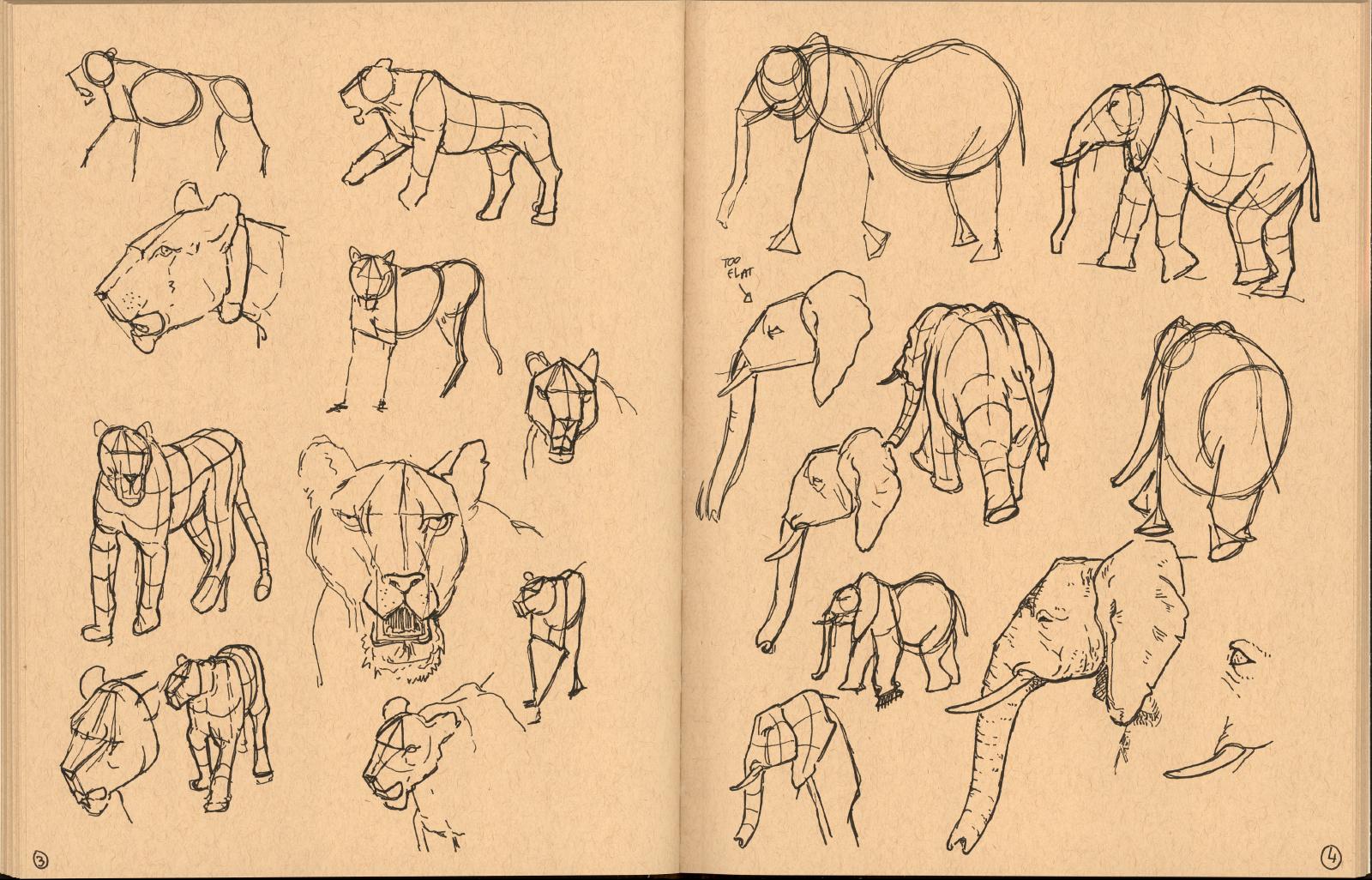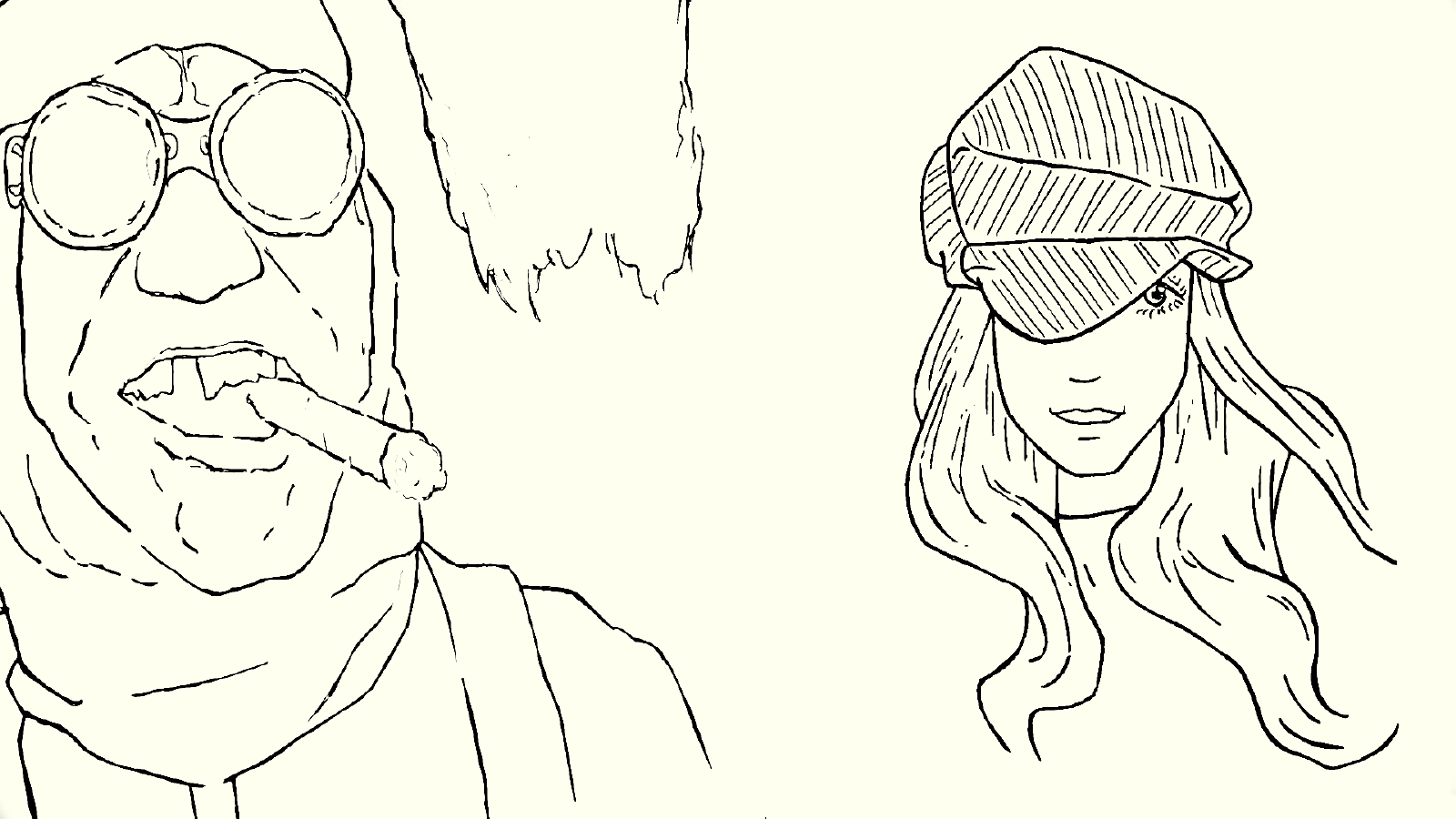#54 - The Case Against Calling Yourself An Artist
Because being an artist comes with external expectations.Warm-Up Drawing Exercises

Quickly become better at drawing—without burning out—by using my workbook.
People act surprised when I tell them that I don’t see myself as an artist.
#54 - The Case Against Calling Yourself An Artist
Because being an artist comes with external expectations.Let me explain why there are good reasons you should consider not calling yourself an artist either.
Being an artist has a certain cachet. You create beautiful images and objects that make people think, make people feel.
Collectors bid millions for your works while you meddle with paint and canvas in your studio. Your works then get shown in expositions and hung on the walls of galleries and in museums.
And therein lies the problem! Those are all the people’s expectations of what the word Art means and what it means to be an artist.
Perceived Value Of Art
I had an enlightening experience once. An older photographer acquaintance who is herself an accomplished artist—her work is in museums and was represented by top gallery owners in New York.
She thought very little of comics and graphic novels. She is still from the generation that thinks comics are for children.
Then, one day, she confided in me that, you know, comics and graphic novels could be valuable! They could be Art too! If you framed comics pages and hung them on a wall, they could be. She had seen that: Roy Liechtenstein and everything.
Think about that for a minute. She only considered a creation worth anything if you could hang it on a wall.
And if you tore a page out of a comic and framed it and hung it on a wall, in her eyes, it could have more value than if you experienced the comic the way the creator intended: by, you know, reading the story!
Comics are about conveying stories! A comic is a carefully designed composition of pages that, in sequence, tells a story. You don’t rip out one page from it. That’s like ripping apart a work of Art.
Would you dare to say to a novel writer, “Hey, your work can be Art, too, you know! Just cut the pages out of your novel and frame them and hang them on a wall! Then your work is more valuable because it is framed and on a wall! It is Art! Not good Art, but Art! And that is, of course of more value than collecting the pages in, eh, a book?”
Should comics creators stop making comics simply because there are people who think it isn’t Art because you can not hang it on a wall, and because, in their eyes, only that type of Art has value?
Should you care about the opinion of others when you are creating Art? Because that is what you are doing if you are trying to create Art: you are trying to abide by the so-called rules of Art that other people came up with.
What Is The Definition Of “Art”?
Because here is another thing: the word Art does not have a definition that everybody agrees on. If someone says something is a work of Art, they are not saying anything about that object. What they are saying is that their definition of the word Art is such that it includes that object.
I often see people deciding in their head whether they like my work based on whether they would hang it on their walls. However, my sketchbook pages are not designed to be hung on walls!
I understand their line of reasoning.
They see that I draw, and when you draw, you are making Art, right?
I am drawing, and, so, therefore, what I am making must be Art.
But it is not good Art in their eyes.
It is not something they would hang on a wall.
Well, here’s the thing: I did not design my drawings to be hung on walls.
My drawings are evaluated on terms I do not wish to apply to my work.
And hence it is much easier for me just not to consider myself an artist.
It gives me so much freedom!
I can write newsletters and blog posts.
Does that make me a writer?
I hope not, because then people start to consider that I am not a good writer because my work isn’t sold through proper publishing companies.
Can I not program if I am an artist? Is programming creative, or isn’t it? Is it Art? And more importantly, do these questions matter?
If you put a label on what you do, you limit what you can do.
You stop trying things that can not be filed under that label.
You can not write because that is not Art.
You can not make comics because that is not Art.
You can not program because that is not Art.
That’s all nonsense, of course.
What Instead Of “Art”?
The concept of Art is an invention of the nineteenth century.
Think about that for a moment.
Rembrandt and Leonardo da Vinci lived in times where there was no such thing as Art.
And they both experimented like crazy.
They both pushed the envelope.
They both did things no one else had done before.
Because that is what you end up being able to do if you ditch the labels: you get to go into uncharted territory!
Another example is the discussion people used to have as to whether graphic novels were just comics.
In a sense, both comics and graphic novels are sequential Art: a sequence of images and text that tell a story when placed in the correct order.
Some comics fans would say that those graphic novels were just comics and that the term “graphic novel” was just something used for marketing purposes: to convey that these were comics but for adults. They were more like novels, not like superhero floppies.
But then you have comics creators who religiously keep to the format, size, and page count of the floppies which the more prominent publishers sell, as if that is the only proper way to make comics.
These comics creators are saying that graphic novels are comics, but that it is the wrong way to make comics.
To them, comics have to be floppies with superhero stories in them.
Reina Telgemeier and Manga proved them wrong, of course.
Also, if you ever get the chance, and if you haven’t checked it out, Franco-Belgian albums are amazing.
They are comics but with much larger pages, and much higher page count, and very different conventions.
In these albums, you have way more panels—there is no such thing as a splash page, and the artists do not use dynamic camera angles for the panels of their comic. It’s all just about around eye height.
European comics are more like American films, ironically.
But this is a topic for another time, maybe.
As soon as you put a label on the thing you do, you limit yourself.
You limit what you can do because you have decided to keep to the conventions of that label.
If you look at the big runaway successes, you will see that they started by doing things that you were not supposed to do according to the labels.
Examples
In the personal computer era, PC makers competed on performance and price.
You bought the most powerful computer, with the most CPU power, and the most memory, for the lowest price. The computers were ugly gray boxes.
Then, along came Apple and said, no, we are going to be making nice-looking boxes.
The personal computer industry did not take notice!
That is not how you competed in that field!
Apple’s computers were more expensive and less powerful!
That was not how one did it!
And yet.
Apple found a market: people who wanted their offices to look nice.
Creatives, for example. Your output is influenced by your intake, and having a beautiful space around you helps.
A gorgeous computer in the office becomes a necessity, even if it is more expensive.
It pays itself back when you produce better work.
There are many other examples like this, but you get the idea.
As a fun challenge, examine and list one to three labels you work under: examine and list the expectations that come with them, and find three expectations that come with those labels that you don’t like.
Then, today, disregard those three expectations—without doing anything illegal, of course! Try to do things you are not supposed to do according to the labels.
For example, I like to sketch with a ballpoint pen, but you are not supposed to make Art with ballpoint pens because the ink isn’t light-fast. But wow, is it liberating when I just sketch with these!
If you look around, there are so many limits we put on ourselves when we set to create things.
Many comics creators, for example, still think in comics pages because they dream of one day printing their comics in paper form.
So they share their pages online, and frankly, it tends to be hard to read.
They also present it on clunky web pages and have user interfaces that pull you out of the story, having to search for the “next page” button.
Webtoons showed that vertical scrolling comics could work well online.
But why is no one trying that through a newsletter! An email is vertical-scrolling.
And why is no one experimenting with horizontal-scrolling comics! It’s such a natural fit.
Your eye goes from left to right.
In the old newspaper adventure strips, the word balloons were at the top, and the talking heads below that, providing a natural way to read them from left to right.
If you look around you, I am sure that you can think of things you would have liked to have done, but where you believed that you were not supposed to, because you are an “Artist.”
For example, I also program. I write. I draw with a ballpoint pen. I just fill sketchbooks and never make finished pieces. I make YouTube videos.
Many people would not consider me an artist, and I do not care.
My point is that you shouldn’t care either.
You need to give yourself room to experiment, away from the expectations of others.
Look around you, and examine your art creation process.
Are there things that you prevented yourself from doing because artists are not supposed to do these things?
Then experiment and try these things today! Be a Rembrandt! Be a Leonardo da Vinci! Be curious and explore, even if it leads you to do things others don’t consider Art.
Related
I wrote here about the benefits and virtues of copying other artists. So am I contradicting myself? No! You do need to learn the craft, and a good way to learn that is by copying other artists. Rembrandt learned from his master. You do need to learn the skills and a good way of doing that is by copying the masters. But then heed the gist of this article, and do things you are not supposed to do!
I wrote here also about how to look at the so-called rules of art.
This article has some musings on vertically-scrolling comics that are sent by email.
